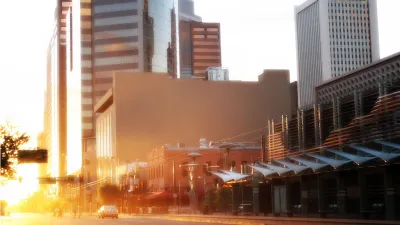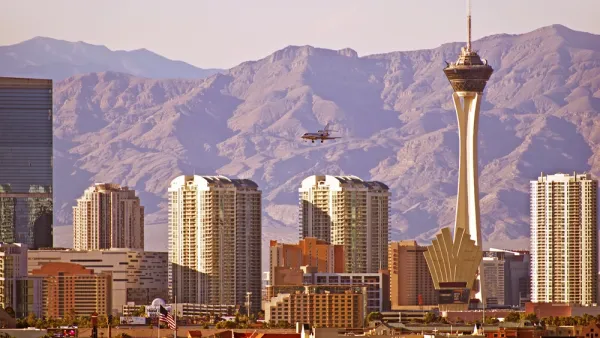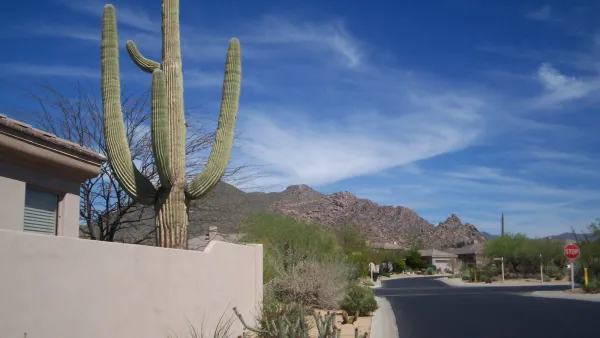As the number of excessive heat days steadily increases, cities face a range of new challenges. But they are also trying to get ahead of the problem while they still can.

Cities across the Southwest are now regularly facing sweltering heat conditions. Many areas contend with days on end of temperatures over 100 degrees, with serious consequences. “Such relentless, triple-digit temperatures — the equivalent danger of rising seas in many coastal communities — are straining power grids, buckling roads, grounding planes and endangering lives,” report Robert Moore and Katherine Davis-Young.
Moore and Davis-Young explain that urban areas are particularly vulnerable to the effects of extreme heat:
The issues are particularly pronounced in the Southwest’s largest metropolitan areas given the “heat island” effect caused by pavement and construction, which reflect heat instead of allowing it to be absorbed into the ground. As a result, temperatures are often several degrees warmer than those outside the city — and sometimes more than 20 degrees warmer at night.
Experts predict that these weather conditions will only continue to worsen. In response, cities are working to mitigate the challenges brought on by the hot weather. Los Angeles, for example, has put into place “cool roofing” requirements and has also used pavement treatments designed to lower the surface temperatures of streets. Phoenix similarly launched a Cool Roofs initiative in 2013. In addition, the city developed a tree-shade master plan, and it has a HeatReady program in the works to help the city prepare for and respond to urban heat dangers.
While cities in the heat belt work proactively to take measures, many still face challenges. “Bureaucracies are slow to innovate. Cost-sensitive developers are reluctant to take steps that could add to the price of new construction,” say Moore and Davis-Young. But one of the greatest hurdles is “community inertia,” when people get used to changing conditions and the effects on their quality of life.
FULL STORY: As temperatures keep trending up, ‘heat belt’ cities maneuver to stay livable

National Parks Layoffs Will Cause Communities to Lose Billions
Thousands of essential park workers were laid off this week, just before the busy spring break season.

Retro-silient?: America’s First “Eco-burb,” The Woodlands Turns 50
A master-planned community north of Houston offers lessons on green infrastructure and resilient design, but falls short of its founder’s lofty affordability and walkability goals.

Delivering for America Plan Will Downgrade Mail Service in at Least 49.5 Percent of Zip Codes
Republican and Democrat lawmakers criticize the plan for its disproportionate negative impact on rural communities.

Test News Post 1
This is a summary

Test News Headline 46
Test for the image on the front page.

Balancing Bombs and Butterflies: How the National Guard Protects a Rare Species
The National Guard at Fort Indiantown Gap uses GIS technology and land management strategies to balance military training with conservation efforts, ensuring the survival of the rare eastern regal fritillary butterfly.
Urban Design for Planners 1: Software Tools
This six-course series explores essential urban design concepts using open source software and equips planners with the tools they need to participate fully in the urban design process.
Planning for Universal Design
Learn the tools for implementing Universal Design in planning regulations.
EMC Planning Group, Inc.
Planetizen
Planetizen
Mpact (formerly Rail~Volution)
Great Falls Development Authority, Inc.
HUDs Office of Policy Development and Research
NYU Wagner Graduate School of Public Service





























